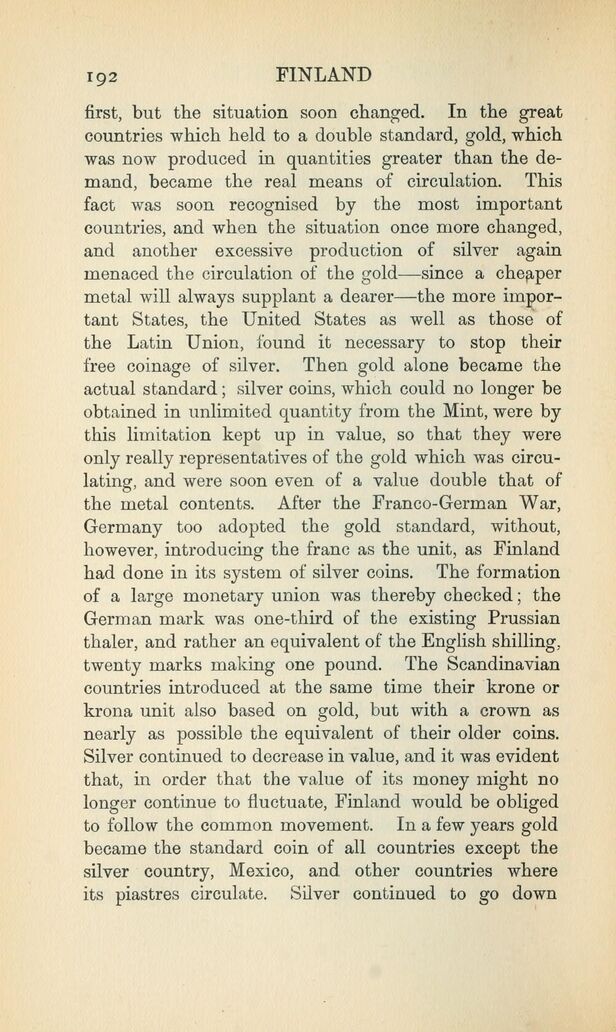
Full resolution (JPEG) - On this page / på denna sida - VIII. Money and Banking

<< prev. page << föreg. sida << >> nästa sida >> next page >>
Below is the raw OCR text
from the above scanned image.
Do you see an error? Proofread the page now!
Här nedan syns maskintolkade texten från faksimilbilden ovan.
Ser du något fel? Korrekturläs sidan nu!
This page has been proofread at least once.
(diff)
(history)
Denna sida har korrekturlästs minst en gång.
(skillnad)
(historik)
first, but the situation soon changed. In the great
countries which held to a double standard, gold, which
was now produced in quantities greater than the
demand, became the real means of circulation. This
fact was soon recognised by the most important
countries, and when the situation once more changed,
and another excessive production of silver again
menaced the circulation of the gold — since a cheaper
metal will always supplant a dearer — the more
important States, the United States as well as those of
the Latin Union, found it necessary to stop their
free coinage of silver. Then gold alone became the
actual standard; silver coins, which could no longer be
obtained in unlimited quantity from the Mint, were by
this limitation kept up in value, so that they were
only really representatives of the gold which was
circulating, and were soon even of a value double that of
the metal contents. After the Franco-German War,
Germany too adopted the gold standard, without,
however, introducing the franc as the unit, as Finland
had done in its system of silver coins. The formation
of a large monetary union was thereby checked; the
German mark was one-third of the existing Prussian
thaler, and rather an equivalent of the English shilling,
twenty marks making one pound. The Scandinavian
countries introduced at the same time their krone or
krona unit also based on gold, but with a crown as
nearly as possible the equivalent of their older coins.
Silver continued to decrease in value, and it was evident
that, in order that the value of its money might no
longer continue to fluctuate, Finland would be obliged
to follow the common movement. In a few years gold
became the standard coin of all countries except the
silver country, Mexico, and other countries where
its piastres circulate. Silver continued to go down
<< prev. page << föreg. sida << >> nästa sida >> next page >>